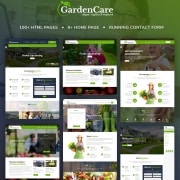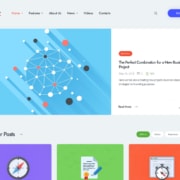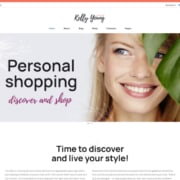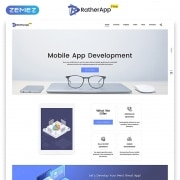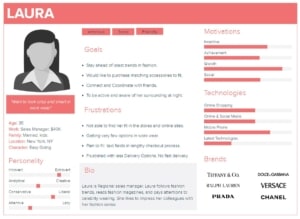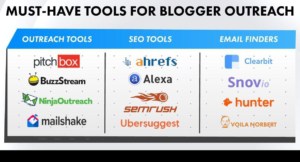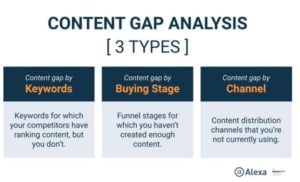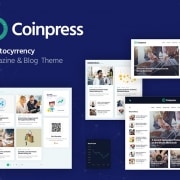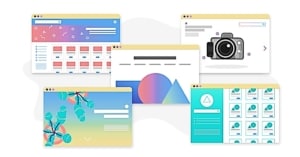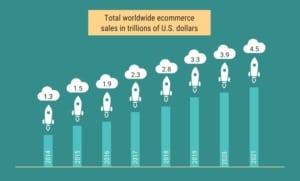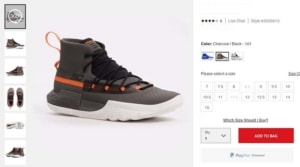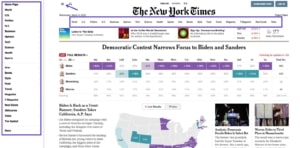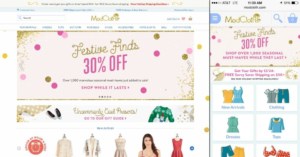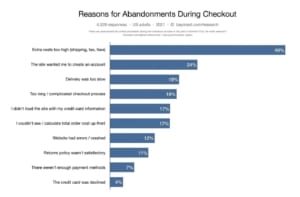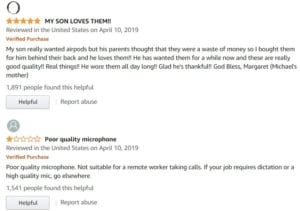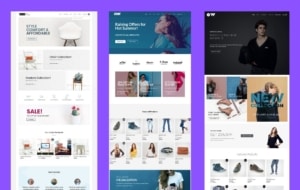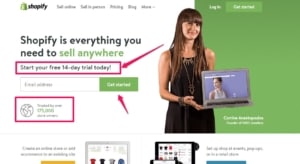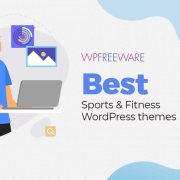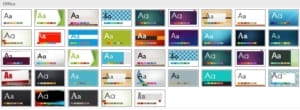3 Smart Growth Hacks to Accelerate Sales Automation
Across industries, sales teams spend huge amounts of time doing tasks manually, even though they could be easily automated. Automating your repetitive tasks will allow you to devote more time to closing deals instead of performing client outreach.
As a B2B growth hacker, you need to work on your entire sales funnel. This will help you scale up your activation, retention, revenue, and referrals. All this can only be possible if you build relationships with my clients and humanize your sales automation processes.
Let’s face it – despite the advent of technology and machine learning, running a successful business still boils down to building connections. No one wants to make deals with someone who sounds like a robot!
In this guide, we will look at three growth strategies that combine automation and personalization to boost your response and conversion rates.
Let’s get started.
1. Double the open and response rate with image personalization
Any sales campaign’s success is marked by one thing: how well it makes your brand stand out from the crowd. The best way to get noticed is to eschew long chunks of text and use visual content to communicate with your readers instead.
Numerous studies have proven that the human brain processes images around 60,000 times faster than plain text. This should give you all the justification you need to use visual cues in your marketing.
Both static images and GIFs are great ways to hook your readers and drive engagement. With 90% of the information transmitted to our brains being visual, you want to capitalize on the prospect of improved information retention and create visual content that humanizes your marketing. Your product’s value proposition might be the best in the market, but capturing your audience’s attention through humorous, informative visual elements will help them notice your ad and hold their attention.

Source: Chamaileon
The example above from video software company Wistia uses a humorous, catchy GIF that highlights the link to a relevant blog post. Since the company’s target audience is YouTube and Instagram influencers, and presentation is everything in influencer marketing, the article is highly relevant.
Nowadays, you can easily automate a visual campaign using various personalization tools. Let’s look at how you can use these tools to create personalized visual content for your marketing emails.
Choose an image to personalize
The first step in delivering personalized images is to take high-quality and clear photos that are easily personalized. Pay attention to the background and make sure that all elements of the image are clear.
Let’s say you’re running a web design business. You can use a photo like my example below to show how the prospect’s website could look if they hire you. Personalizing the photo is as easy as replacing the blank laptop screen with a mock-up of the prospect’s website. The blank background ensures that the laptop screen is the sole focus of the image.
You can also use personalized images for virtual meeting invitations. Because face-to-face meetings aren’t possible right now, I’ve been inviting my existing and prospective clients to have virtual coffee with me.
A personalized invitation can help you land a meeting with a client who’s willing to hear about your solutions. I just add my name and my prospect’s name to the mugs in the image below, and I’m well on my way to landing a virtual coffee meeting:
The images you use for your personalized campaigns should be simple, eye-catching, and easy to personalize. Above all, they should comply with your branding guidelines and convey your brand values.
Create an image personalization template
Your sales team likely sends numerous outreach emails in a day and cannot possibly manually personalize each image. Thankfully, sales automation tools allow you to create templates for personalizing your marketing emails. These tools can help you craft effective emails regardless of your company size or industry.
The easiest way to use images is to use automation tools that are connected to your existing technology stack. You can use a tool like Hyperise for this. The software uses a simple process that allows you to create personalized images for your sales team.
First, upload the photo you’d like to personalize. You can then introduce a text layer using the placeholder.
The placeholder then gets replaced with your prospect’s first name when you come to use the image.
You can take it one step further with more attention to detail. Check the list of the fonts and choose the handwriting font. Doing this makes it look like someone has taken the time to hand-write their name.
The final images will look like the example above, and your sales representatives can use them to invite qualified leads for a virtual coffee meeting. Doing this helps you build a relationship between your sales team and potential clients.
Hyper-personalization helps drive customer relationships and makes a lasting impact on your leads, which is something that a standard template cannot achieve.
2. Humanize your automated sales process
The more you use sales automation tools, the more you need to add a personal touch to your marketing materials. The potential client should feel like they are talking to a member of your sales team, not a machine. Personal connections are crucial to any campaign, but they are particularly important in sales, where trust and relationships often close deals.
The main goal of personalizing your sales processes is to offer your potential customers an experience that provides value, not to hard-sell your products or services. Your sales email is an opportunity to build a lasting relationship with your prospects through genuine human interactions.
Let’s look at three easy steps to help you make the most of your email marketing services, from initial outreach to follow-up emails.
Be relevant to the recipient’s experiences
For your sales automation campaigns to be effective, you have to back them up by personalizing them with common contact points and mutual interests. Your potential customers likely receive many sales emails in a day, and the only way to stand out is to give them content they can relate to.
One way to do this is by using dynamic content personalization outreach, which uses popular social media posts to find a common ground with the recipient. Here is how you can use public posts to find a compelling opening line:
-
Find a relevant LinkedIn post that has a significant engagement rate.
-
Create a list of all the people and their email addresses (you can use online email finder tools to discover their contact details) who have commented on that post.
-
Send an email or LinkedIn outreach message to the people on the list using automation tools. In the email, start by referring to the article and the comment they left on the post.
-
Introduce your value proposition into the conversation.
There are a couple of other ways to send automated emails to LinkedIn users. By using spin syntax with tools like Lemlist, you can personalize the text and images while also including dynamic landing pages for easy appointment setting.
If you are a LinkedIn user, you can also automate your outreach emails using Expandi. The creators of Expandi estimate that using the first name of your prospect and a personalized opening line can help boost the acceptance rate to 72% and increases the chances of a prospect responding to a follow-up to 40%. The software does this by hyper-targeting and using a common point as a conversation starter, making it sound less automated and more human.
Here are three reasons this approach works better than conventional sales automation methods:
-
Instead of beginning with a hard sell, you start the conversation with mutual interests that help you build a relationship with your recipients.
-
By referring to a post that they engaged with, you don’t look too intrusive. Instead, you highlight something you have in common.
-
Instead of forcing them to check out your value proposition, you provide a reason to connect with you and start a conversation.
By tapping into your prospects’ experiences and interests, you move the focus away from making a deal to building a relationship. Personalizing your emails allows you to lay the foundation of a strong customer journey.
In the next section, we will see how you can add some personality and humor to your sales emails to create a successful campaign.
Add Personality to your Email
There is no reason why your sales email has to be all business and cannot have a touch of personality. Animated GIFs and emojis are a great way to add some humor while also getting your message across. While the use of emojis in email marketing is still a hotly debated topic, we can’t deny that they have been a game changer for marketing professionals.
To avoid emojis from looking unprofessional, you must ensure that they stay aligned with your tone. Also, make sure you test the response to emojis, as some of them may have double meanings. Zerobounce has an extensive list of the rules of emoji etiquette. You can also apply similar rules to your use of GIFs in email.
How can we use them in the right way? Let’s look at how I used emojis and animated GIFs to reach out to potential clients.
I used the GIF above in a follow-up email to a prospective client. Since I’d already sent an introductory email before, the GIF above would have made my client feel like we had already met, and that my brand was something that he should be looking forward to learning more about.
The next GIF acknowledged that I’d lost contact with the prospective client. However, I wasn’t about to give up on them that easily:
After following up about four times, I used a GIF like that below, which was a humorous way to check-in with your potential client without imposing on them:
Emojis and animated GIFs are not just perfect for emails but can also be used on other platforms. The combination of tools like Hyperise and Expandi let you add a personal touch to your outreach on sites like LinkedIn. In the example above, the software inserts your prospect’s name and image to create a hyper-personalized pitch every time.
Personalized Videos in the B2B Sales Process
Video marketing has gained momentum over the past few years. One study estimates that around 90% of online marketers use videos in their campaigns. Personalized videos can help you stand out from the crowd if you do them right. If you’d like to learn about using video to elevate your B2B marketing, there are online courses that will teach you the basics of video content creation.
Combining personalized videos and sales automation can help double your response rate. The process is quite simple. Many online applications allow you to record and share video pitches, which help you build a story around your brand.
Source: Vidyard
The video pitch from Dynamic Signal, above, went viral as soon as it was launched. One of the company’s executives took a novel approach to pitching their solution to a restaurant known for its spicy wings. He made his pitch while eating the restaurant’s spicy wings, even as he was sweating, laughing, and crying. Thankfully, the restaurant agreed to a sales meeting with Dynamic Signal and the video earned the coveted Video in Business award later on.
I also use videos in my sales outreach campaigns, and use the free Bigvu app to record and edit them. Bigvu’s teleprompter feature helps me read my lines effortlessly. It displays the text on the screen below the camera, which makes your audience feel like you’re talking directly to them.
You can create engaging and personalized video pitches in four simple steps:
-
Write your script.
-
Use a teleprompter app to record your video.
-
Create your video landing page.
-
Use the landing page in your outreach and follow-ups. A great way to do this is to use the subject line “Hey [FirstName]. I created a video for you!”
An engaging video helps your brand stand out and helps you make an emotive pitch to your prospects. While I’m relatively new to video marketing, my first few attempts have seen great results and have helped me get more responses than ever. My videos have also proven to be effective in starting to build new relationships, leading to more revenue for my business.
3. Speed up the sales workflow
Sales automation tools should help you improve your outreach across platforms. For example, tools like Zapier allow you to automate your cold outreach strategy on LinkedIn. Use their webhooks feature to automatically send a welcome email in real-time to LinkedIn contacts who accept your contact requests.
Let’s see how we can use Zapier to step up your LinkedIn outreach game:
Step 1: Connecting Zapier and Expandi via Webhooks
If several contacts accept your requests, you will not be able to send emails to all of them at the same time. Thankfully, you can use webhooks to automate your responses.
Webhooks, also known as web callbacks or HTTP push API, are automated notifications sent by one app to others to report a new development. Once you connect Expandi and Zapier via webhooks, you will always be notified whenever someone accepts your LinkedIn connection requests. As soon as Zapier identifies the event as a connection request acceptance, it performs a preprogrammed action, such as adding the contact to an email list.
Here is what a web hook looks like:
Step 2: Connect Webhooks by Zapier with your outreach tool
After your prospect accepts your LinkedIn connection request, the next step is to add them to your email outreach list. After this, you can shoot them a follow-up email to start a conversation.
This process can be automated as well – all you have to do is link Webhooks by Zapier to your email outreach tool.
After you integrate it with your email marketing platform, Zapier automatically adds your new contact’s name and email address to your mailing list. The follow-up email will look something like this: “Hello [firstname], it’s nice to connect with you on LinkedIn”, followed by your pitch.
Sales automation allows your sales team to spend less time on outreach by creating practical tools that generate qualified leads. It helps them focus on other aspects of the sales cycle and avoid re-work and duplicate outreach.
In Closing
While sales automation can help you streamline your processes, adding a personal touch to your outreach efforts is what will ultimately help you land clients. Whether via email or through LinkedIn (or a different channel entirely), there are several excellent online tools that can help you make a customized pitch every time.
Use tools like Lemlist, Bigvu, Hyperise, and Zapier to craft compelling emails that empower you to create massive personalized campaigns. Don’t be afraid to experiment with images, videos, emojis, and animated GIFs to bring your marketing emails to life.


